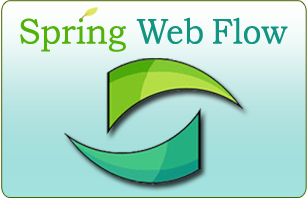Get ahead
VMware offers training and certification to turbo-charge your progress.
Learn more
Spring Web Flow is a product of the Spring community focused on the orchestration of user interface flow within a web application.
This release contains many improvements and several exciting new features. We consider it the most stable release to-date and, at last, the release that makes the Spring Web Flow 1.0 final roadmap feature complete. Spring Web Flow 1.0 final will be released next week with minimal changes. Between now and then we encourage you to test 1.0 RC4 to help catch any remaining issues before the big 1.0 launch.
Note there are user-affecting changes in this release. 1.0 RC3 or earlier users should review the upgrade guide which outlines these changes in detail.
The new and noteworthy in 1.0 RC4 is an exciting list, including:
New and Noteworthy
As the final release candidate before Spring Web Flow 1.0 final, Spring Web Flow 1.0 RC4 introduces powerful new features such as render actions (1), evaluate actions (2), set actions (3), flash scope (4), flow execution attributes (5), and always redirect on pause (6). It provides enhanced documentation, better flow definition validation, smart defaults, and a complete custom Spring 2.0 configuration schema (7) for configuring the flow execution engine.
<view-state id="displayResults" view="searchResults">
<render-actions>
<bean-action bean="phonebook" method="search">
<method-arguments>
<argument expression="flowScope.searchCriteria"/>
</method-arguments>
<method-result name="results"/>
</bean-action>
</render-actions>
<transition on="newSearch" to="enterCriteria"/>
<transition on="select" to="browseDetails"/>
</view-state>
<action-state id="makeGuess">
<evaluate-action expression="flowScope.game.makeGuess(requestParameters.guess)">
<evaluation-result name="guessResult"/>
</evaluate-action>
<transition on="CORRECT" to="showAnswer"/>
<transition on="*" to="enterGuess"/>
<transition on-exception="java.lang.NumberFormatException" to="enterGuess"/>
</action-state>
<action-state id="uploadFile">
<action bean="uploadAction" method="uploadFile"/>
<transition on="success" to="selectFile">
<set attribute="fileUploaded" scope="flash" value="true"/>
</transition>
</action-state>
<flow xmlns="http://www.springframework.org/schema/webflow"
xmlns:xsi="http://www.w3.org/2001/XMLSchema-instance"
xsi:schemaLocation="http://www.springframework.org/schema/webflow
http://www.springframework.org/schema/webflow/spring-webflow-1.0.xsd">
<start-state idref="selectFile"/>
<view-state id="selectFile" view="fileForm">
<transition on="submit" to="uploadFile"/>
</view-state>
<action-state id="uploadFile">
<action bean="uploadAction" method="uploadFile"/>
<transition on="success" to="selectFile">
<set attribute="fileUploaded" scope="flash" value="true"/>
</transition>
</action-state>
</flow>
<flow:executor id="flowExecutor" registry-ref="flowRegistry">
<flow:execution-attributes>
<flow:alwaysRedirectOnPause value="false"/>
</flow:execution-attributes>
</flow:executor>
<?xml version="1.0" encoding="UTF-8"?>
<beans xmlns="http://www.springframework.org/schema/beans"
xmlns:xsi="http://www.w3.org/2001/XMLSchema-instance"
xmlns:flow="http://www.springframework.org/schema/webflow-config"
xsi:schemaLocation="
http://www.springframework.org/schema/beans
http://www.springframework.org/schema/beans/spring-beans-2.0.xsd
http://www.springframework.org/schema/webflow-config
http://www.springframework.org/schema/webflow-config/spring-webflow-config-1.0.xsd">
<!-- Launches new flow executions and resumes existing executions. -->
<flow:executor id="flowExecutor" registry-ref="flowRegistry"/>
<!-- Creates the registry of flow definitions for this application -->
<flow:registry id="flowRegistry">
<flow:location path="/WEB-INF/flows/**-flow.xml"/>
</flow:registry>
</beans>
See the reference manual for more information on these features. Spring Web Flow 1.0 RC4 further refines the reference documentation, providing 70 pages on SWF usage. The manual is available on-line in HTML and PDF forms.
Getting Started
One of the best ways to get started with Spring Web Flow is to review and walkthrough the sample applications. We recommend reviewing all samples, supplementing with reference manual material as needed from the start. Ten sample applications ship with the release, each demonstratinga distinct set of product features. These samples are:
To build the sample applications for quick evaluation simply:
All sample projects are Spring IDE projects directly importable into Eclipse.
Thanks to everyone out there who supported this release. Spring Web Flow 1.0 is now... finally... just around the corner.
Enjoy!
The Spring Web Flow Team